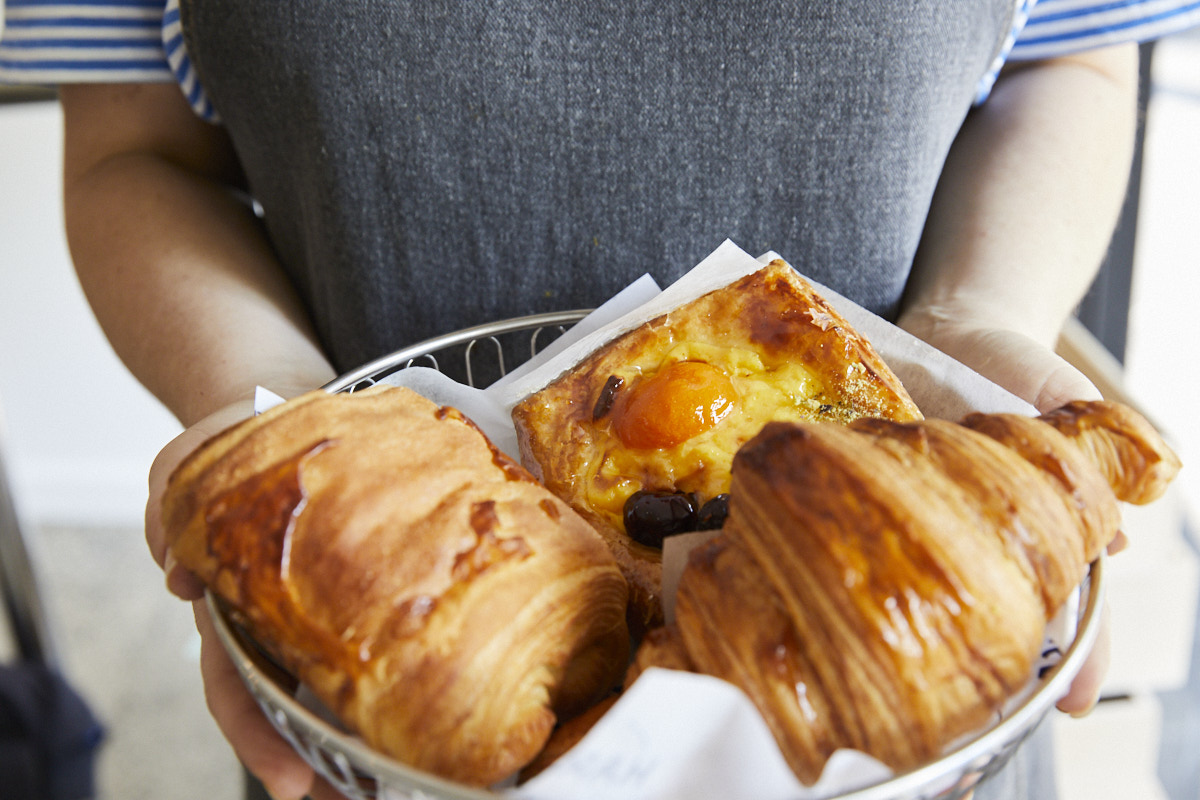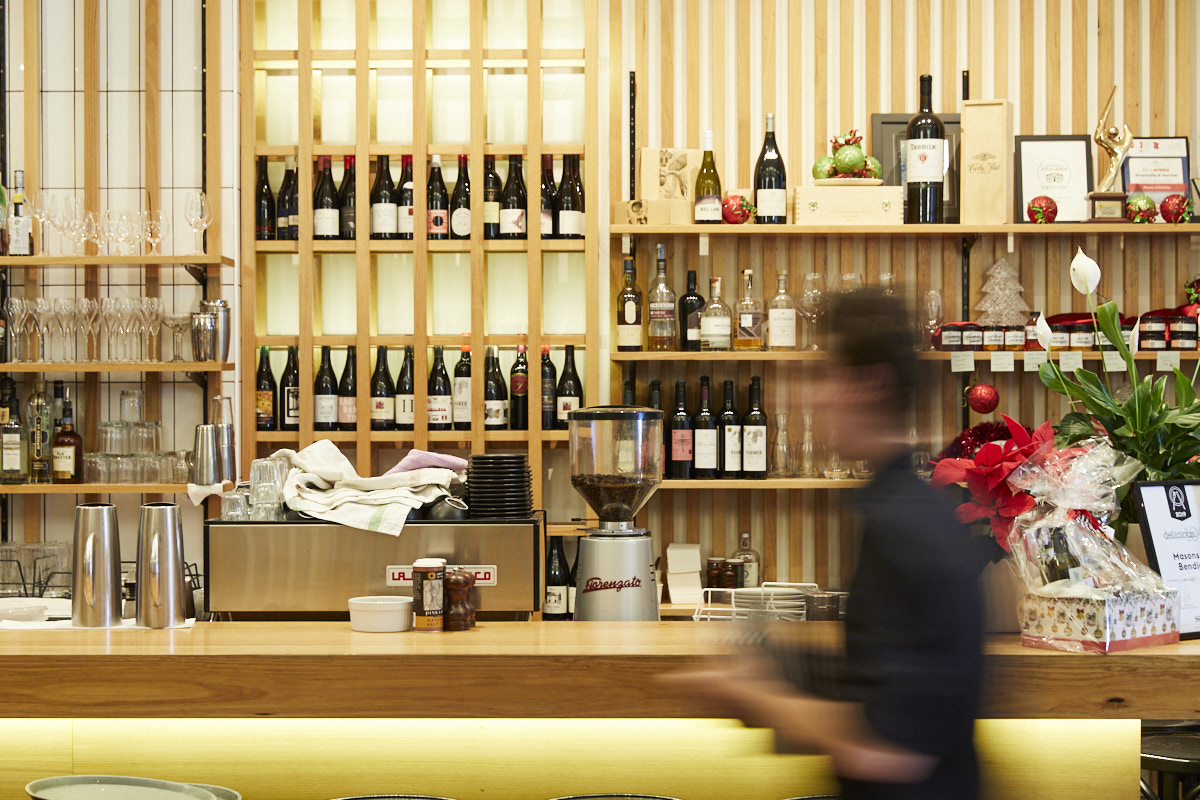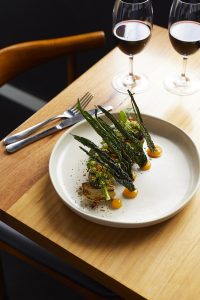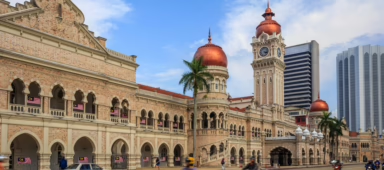Just north of Melbourne is Australia’s first Unesco City of Gastronomy, where great food is served with a side of history
There’s a queue forming beneath a navy-blue marquee at the Castlemaine Farmers Market. An older woman, seeing that the straggly line has forked, shepherds people into single file. “I don’t want any of you to miss out on the milk,” she exclaims.
The milk she’s referring to is from Stellar Farmhouse Creamery, an organic micro-dairy in the orchard town of Harcourt, an hour and a half north of Melbourne. The creamery only has a handful of dairy cows, so there’s a limited supply of milk but an abundance of keen customers. At the front of the queue, glass bottles clink as people swap their empty containers for those filled with fresh milk, marvelling at the inch-deep cream at the top.

It’s a sunny Wednesday afternoon and the small weekly market in central Victoria is buzzing with people. Further down, the fragrant scent of strawberries drifts through the air. I wander over to the stall where a man is gently placing the heart-shaped fruit onto cardboard trays. He hands me a plump berry and I bite into it. It’s just like the sun-ripened strawberries from my childhood in Melbourne – deep red and sweet. I buy two trays to take home.
This thriving market is just one of many examples of the quality of produce this region yields. Once known for its rich goldfields, the greater Bendigo region, of which Castlemaine and Harcourt are part, is now renowned for its plentiful culinary riches. In October 2019, Bendigo was designated Australia’s first Unesco City of Gastronomy, joining other food destinations including Chengdu in China, Parma in Italy and Phuket in Thailand.

Bendigo is now part of a network of 246 Unesco Creative Cities awarded for excellence in the fields of gastronomy, music, literature, crafts and folk art, design, media arts and film. And while the Greater Bendigo region has abundant restaurants, bars, bakeries, farmers markets, wineries, breweries and community gardens, the City of Gastronomy designation also takes into account the area’s Indigenous history, culinary heritage, food innovation and sustainability.
What makes this region unique is not the number of world-class restaurants, but the way food connects people. Not only is local produce heavily featured on restaurant and café menus, there are also cooking clubs focusing on food literacy and food security, groups of marginalised and vulnerable individuals engaged in gardening and projects rehabilitating the natural environment.
At Masons of Bendigo, a chic restaurant in the city’s CBD, there’s Indigenous artwork by young Dja Dja Wurrung entrepreneur Sharlee Dunolly-Lee on the lids of the tea canisters. I chat with effervescent chef and owner Sonia Anthony while she delicately spoons the tea into individual teapots. “These three teas use Indigenous flavours blended by Sharlee and Aunty Julie McHale, who is an Indigenous elder,” Sonia says. “Aunty Julie grows lots of the spices and herbs herself.”
I sip on the green tea with lemon myrtle, ginger and native lemongrass, which is rich and smoky, while the chai blended with wattleseed and pepperberry has a spicy warmth that builds slowly.
“I see the restaurant as a soap box,” Sonia says. “It’s a space where I can champion local producers. Knowing who grows your food makes it taste so much better.”
The thick belt of producers listed on the menu at Masons is a who’s who of regional artisans. There’s the beef sourced from just 40 minutes outside Bendigo, fresh vegetables from a local not-for-profit social enterprise, and organic goat’s cheese from the rocky hills of Sutton Grange.
Each dish at the restaurant gives you a glimpse into the depth of food stories in this area, and the connections that Sonia has forged with local producers, growers and artisans. Masons’ kangaroo tail terrine, for instance, is served with crisp sourdough “bark” that is baked at Blumes Historic Bakery in Harcourt.
In a woodfired Scotch oven that’s been in use for around 145 years, Jodie Pillinger, the owner and baker at Blumes, supplies Masons and other restaurants in the region with her baked goods, as well as selling direct from a charming red-brick building encircled by grape vines and rose bushes.
The morning I meet Jodie, she’s dropping cake batter studded with plump, organic dried fruit into small tins. “We’re seeing a revival of country towns starting to restore their beautiful Scotch ovens,” she says. “Years ago, country bakeries couldn’t compete with sliced white bread, but now people want to eat food that is sustainable and wholesome.”

Small rural bakeries like Blumes are also reviving traditional types of Australian bread that were once commonplace, but were decommissioned as commercial bakeries became more widespread. Working with Jodie is legendary baker John Downes, who has mastered the art of barm bread, where yeast from ale is fermented overnight, producing a moreish, springy loaf. “It’s like sourdough bread, but without the sour,” John says.
“It’s much more complex to make than sourdough. We think we’re the only ones in Australia doing it. Many Aussies grew up eating this kind of bread and when they try ours, it’s so evocative for them.”
In fact, looking at all the loaves stacked on the weathered timber shelves at Blumes feels like stepping back in time – from the shiny dark crust of the brack (traditional Irish fruit bread) to the tangy sourdough loaves and old English buns. This sense of nostalgia permeates throughout the region, especially in Bendigo’s CBD with its renowned art gallery and heritage-listed buildings.
While the gleaming subway tiles and timber tables of Harvest Food & Wine in the heart of the Bendigo art district are undeniably modern, part of the region’s history is served with each of the bistro’s dishes. The flaky, buttery homemade croissants and pastries (made daily by owner and pastry chef Marsha Busse), the seasonal salads and European rotisserie lunches are served on beautiful plates and bowls from Bendigo Pottery, which is Australia’s oldest working ceramics studio.

“It’s great using plates that have a local connection,” says Lincoln Riley, winemaker and sommelier, co-owner of Harvest and Marsha’s husband. “And the food we put on these plates is really simple in that there’s no trickery, but it’s fresh, homely and delicious. And a lot of hard work goes into achieving that each day.”

Hard work and history. It’s a thread that’s woven throughout the stories of the bakers, millers, growers, farmers, cooks, winemakers and cheesemakers in this region. Peter Cobb is part of a 120-year-old tradition at Laucke Flour Mills on the banks of the Loddon River, as general manager of one of Australia’s few remaining family-owned flour milling operations. “Grains have a terroir, just like wine does,” he says. “Depending on the variety, soil and local climate, grains will taste like the region they were grown in.”
Getting a true taste of a gastronomic region often means hitting the road and talking to locals about where excellent food experiences can be found. “This area has access to all kinds of superb local produce, rather than being great at just one thing,” Peter says. “If you imagine Bendigo as the centre of a clock face, sweep the hands around and wherever they land you’ll find a vibrant food culture and bountiful produce that changes by the season.”
Malaysia Airlines flies 14x weekly between Kuala Lumpur and Melbourne. To book a flight, visit malaysiaairlines.com.








